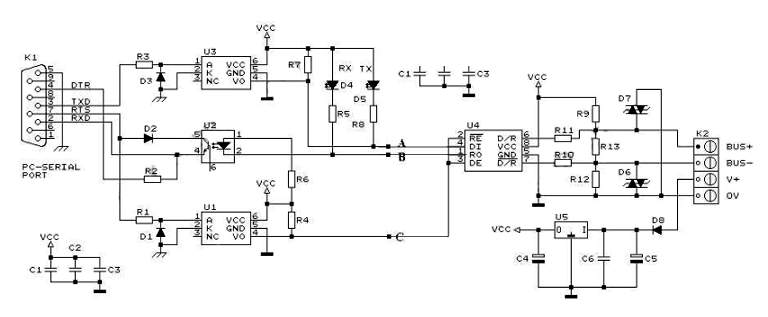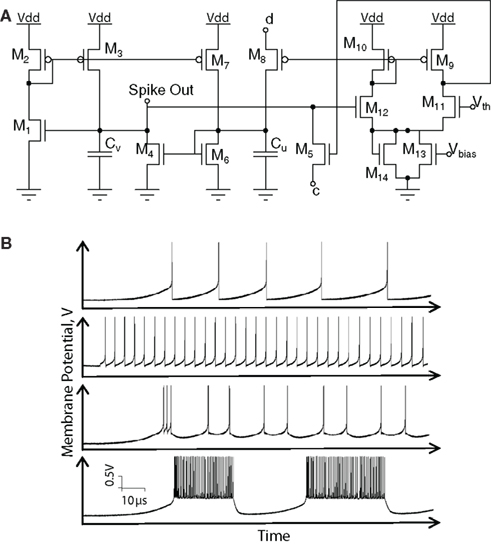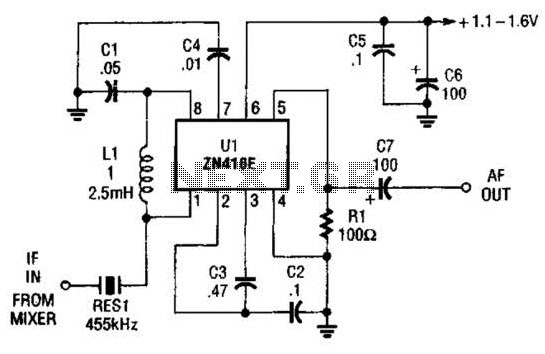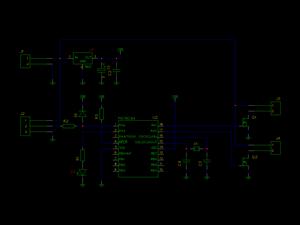
RS232 to RS485 Converter Circuit Schematic

RS232 to RS485 Converter Circuit Schematic. RS232 to RS485 converters are primarily utilized in industrial and commercial settings.
The RS232 to RS485 converter circuit is designed to facilitate communication between devices using different serial communication standards. RS232 is commonly found in personal computers and simple devices, while RS485 is often employed in industrial applications due to its ability to support longer distances and multiple devices on the same bus.
The schematic typically includes an RS232 interface, which connects to the RS232 port of a computer or device, and an RS485 interface that connects to the RS485 bus. Key components in the circuit may include a level shifter or transceiver, such as the MAX3485 or SN75176, which converts the single-ended RS232 signals to differential RS485 signals. This conversion is crucial for maintaining signal integrity over long distances, as RS485 uses a twisted pair of wires to reduce electromagnetic interference.
Power supply considerations are also essential in the design. The circuit may incorporate a voltage regulator to ensure that the transceiver operates within its specified voltage range, typically between 3.3V and 5V. Additionally, proper termination resistors are often included at the ends of the RS485 bus to minimize reflections and ensure reliable communication.
Overall, the RS232 to RS485 converter circuit is a vital component in industrial automation, allowing for robust communication between various devices over extended distances while maintaining data integrity.RS232 to RS485 Converter Circuit Schematic. RS232 to RS485 converters are mostly used in industrial and commercial environments.. 🔗 External reference
The RS232 to RS485 converter circuit is designed to facilitate communication between devices using different serial communication standards. RS232 is commonly found in personal computers and simple devices, while RS485 is often employed in industrial applications due to its ability to support longer distances and multiple devices on the same bus.
The schematic typically includes an RS232 interface, which connects to the RS232 port of a computer or device, and an RS485 interface that connects to the RS485 bus. Key components in the circuit may include a level shifter or transceiver, such as the MAX3485 or SN75176, which converts the single-ended RS232 signals to differential RS485 signals. This conversion is crucial for maintaining signal integrity over long distances, as RS485 uses a twisted pair of wires to reduce electromagnetic interference.
Power supply considerations are also essential in the design. The circuit may incorporate a voltage regulator to ensure that the transceiver operates within its specified voltage range, typically between 3.3V and 5V. Additionally, proper termination resistors are often included at the ends of the RS485 bus to minimize reflections and ensure reliable communication.
Overall, the RS232 to RS485 converter circuit is a vital component in industrial automation, allowing for robust communication between various devices over extended distances while maintaining data integrity.RS232 to RS485 Converter Circuit Schematic. RS232 to RS485 converters are mostly used in industrial and commercial environments.. 🔗 External reference





